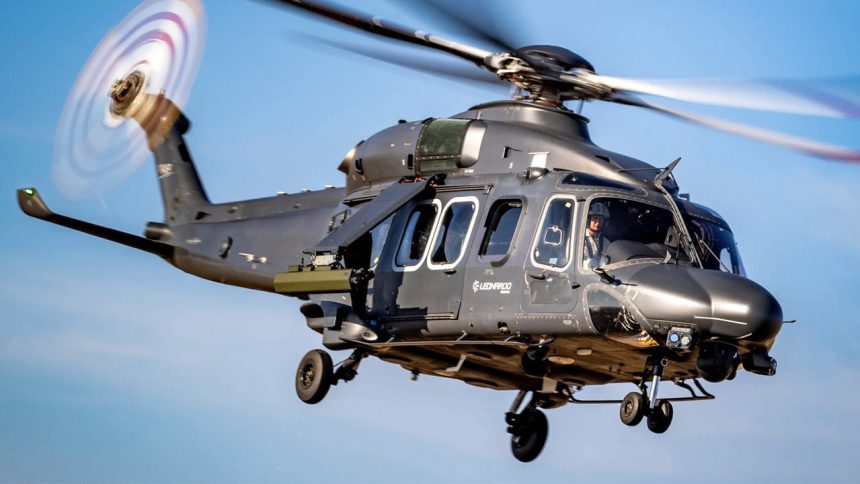As the deadline to submit bids for the United Kingdom’s New Medium Helicopter program passes, Leonardo has been left as the sole remaining bidder as Airbus and Sikorsky confirm they will not seek the contract.
Releasing statements ahead of the midnight deadline on Aug. 30, 2024, Airbus and Sikorsky both maintain the suitability of their respective aircraft for the role envisaged, instead blaming their decisions on other factors surrounding the contract and current market conditions.
The Lockheed Martin/Sikorsky statement reads “We believe that Black Hawk remains the best solution both for the UK armed forces and UK industry and continue to collaborate with UK MoD to support its refresh of the wider UK Rotary Wing Strategy, but have elected not to submit a response to the New Medium Helicopter ITN as we could not meet its minimum requirements in today’s market conditions.”
Airbus made the following statement: “We believe that the outcome of this procurement as it stands would not be able to deliver on current defence-industrial strategy objectives, particularly its ambition for long-term new jobs, opportunities for the UK supply chain and sovereign capability.”
This news comes following a protracted two-year wait following the selection of Leonardo, Airbus, Boeing and Sikorsky (as Lockheed Martin) as the contenders for the New Medium Helicopter (NMH) program in October 2022. Boeing later opted to partner with Airbus to offer the H175M platform, while Lockheed Martin’s Sikorsky subsidiary offered its venerable Black Hawk design.
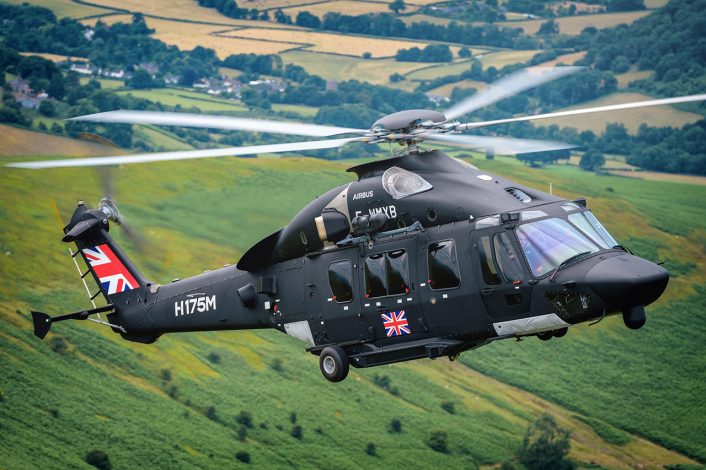
Though long expected previously, the NMH program was officially initiated following the Defence in a Competitive Age command paper published by the UK Ministry of Defence (MoD) in 2021. The paper identified the requirement for a new medium lift helicopter to enter service with the British military in the mid 2020s, replacing the Puma HC2, Bell 212, Griffin HAR2 and Dauphin AH1.
One key requirement of NMH was to provide as much value to UK based industry as possible. Despite being a distinctly American design, the Sikorsky Black Hawk proposal suggested around 40% of each airframe would originate from the UK, with final assembly taking place at StandardAero’s facility in Gosport, Hampshire. An additional named benefactor would have been Martin-Baker, famed for producing ejection seats for many fighter aircraft.
This was not the first time the Black Hawk has been touted for the British military, though the last time it was officially considered caused a dispute in Margaret Thatcher’s government so severe that it threatened her position as Prime Minister. Westland teamed with Sikorsky, as it had before for the highly successful Westland Whirlwind, Westland Wessex and Westland Sea King, among others, to offer the Westland WS-70 Blackhawk as a medium support helicopter to the Royal Air Force. Unfortunately for the bid, the governmental crisis tainted the notion of a British Black Hawk, and instead a decision was eventually made to develop the EH101 Merlin.
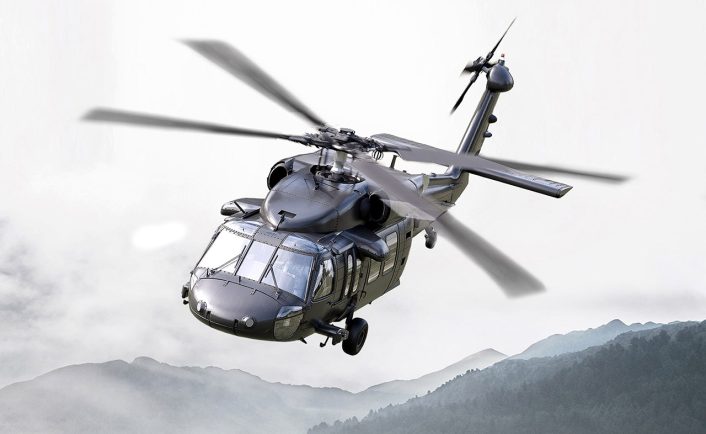
Airbus’ H175M, meanwhile, offered a distinctly newer helicopter design, having made its first flight in 2009. Martin-Baker, again, signed onto this NMH bid, alongside leading UK defence contractor Babcock. The aircraft would have been constructed at Airbus’ existing UK facility in Broughton, North Wales, which is currently a major fabrication facility for Airbus A320, A330 and A350 wing sets. Spirit AeroSystems in Belfast, Northern Ireland, an Airbus partner for the Airbus A220 airliner, also put their name on the H175M bid. The low order number for NMH was planned to be offset by the popularity of the H175M both in the military and civilian markets worldwide, with the potential for many more orders seeing their aircraft constructed in the UK.
The option that now could be declared winner by default, the Leonardo AW149, a larger military derivative of the popular AW139, has seen some success on the international market with large orders by both Poland and Egypt. Leonardo earmarked the historic helicopter factory at Yeovil, home of Westland Helicopters, for any UK AW149 order. The company has long maintained that it is the most natural option for a government looking to boost home-grown businesses, utilizing existing facilities and promising that up to 70% of through-life investment for the AW149 would be within the UK.
Overdue for Replacement
The Royal Air Force’s aging Pumas, the oldest examples of which were delivered fifty three years ago, are now among the oldest operational airframes in the UK’s inventory. In the early 2010s twenty four of the helicopters underwent a significant modernisation effort, being retrofitted with digital cockpits, new engines, gearboxes, tail rotors, and a new defensive aids suite (DAS). These aircraft were given the designation Puma HC2, and the remaining Puma HC1s were retired from service.
The Pumas represent the bulk of the helicopters due for replacement, with other types being relatively small specialised fleets. The Bell 212, split into the AH1, AH2 and AH3 sub-variants, was utilised by the British Army primarily to support the force’s Jungle Warfare Training School in Brunei, while the Bell 412 based Griffin HAR2 served at RAF Akrotiri on Cyprus in a search and rescue (SAR) and aerial firefighting role. Meanwhile, the Dauphin AH1 is operated by 658 Squadron AAC to support UK Special Forces operations and training in the UK. British media have taken to nicknaming these helicopters “Blue Thunder” following their high profile sightings after terror attacks in London.
With NMH then likely to take years to come to fruition, the decision was made in 2022 to retire the Bell 212 and Griffin HAR2 types early, with their duties to be assumed by Puma HC2s. While the reduction of aircraft types eases the MoD’s financial burden, it creates the new problem of losing a significant portion of the Puma HC2 force to these new roles, effectively neutering the part they play in the UK’s Joint Aviation Command (formerly Joint Helicopter Command) structure.
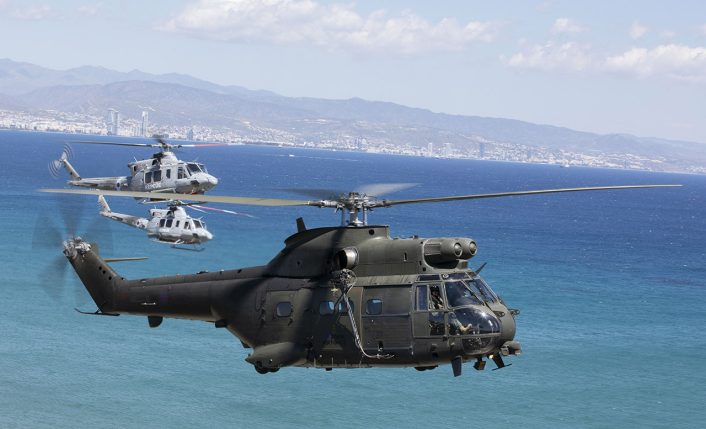
In May 2024, news broke that the NMH order was likely to be cut from the original 44 to around thirty airframes, potentially as low as twenty five. While this would have then caused problems in terms of how to cover so many roles with the number of aircraft, a lifeline was thrown out when the MoD issued a contract to Airbus to supply six H145 helicopters for the detachments in Brunei and at Akrotiri. Their expected delivery, scheduled to begin in late 2024, will allow the Puma HC2s to return home to the UK. The H145 is already operated by the British military under the UK Military Flying Training System contract, and designated Jupiter HT1. The six new helicopters will be designated Jupiter HC2.
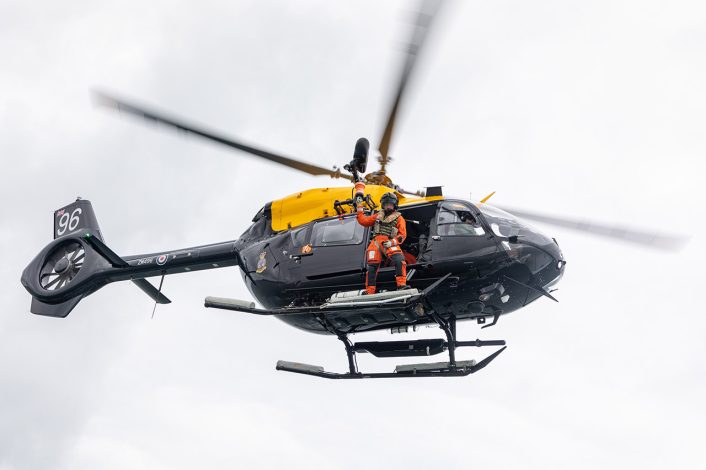
The NMH contract, under the original schedule, was due to be officially awarded in 2025. Whether that remains the case following the withdrawal of all but one bid remains to be seen. Under original, and ambitious, plans, the selected winner was expected to enter service in 2025. This clearly will no longer happen, with a timeframe of around 2027 a more likely goal. Barring yet another extension, Puma HC2s are expected to soldier on in the RAF until 2028.
Whether or not the secretive Dauphin AH1s of 658 Sqn AAC will still be replaced by NMH, or whether a separate contract for this role will be forthcoming, is currently unknown.

